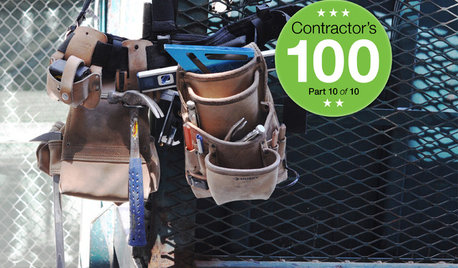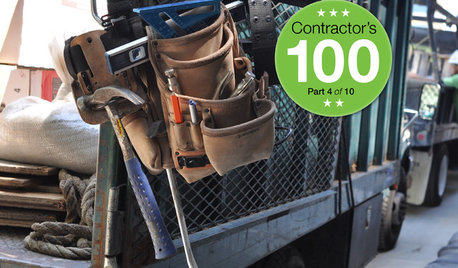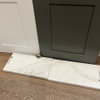My Contractor Put a Nail in a Water Pipe
Wes_in_VA
10 years ago
Related Stories

REMODELING GUIDESContractor's Tips: 10 Things Your Contractor Might Not Tell You
Climbing through your closets and fielding design issues galore, your contractor might stay mum. Here's what you're missing
Full Story
KITCHEN DESIGNKitchen of the Week: A Burst Pipe Spurs a Makeover
Once dark and clunky, this compact kitchen in a 1962 ranch is now light, bright and cheerful
Full Story
REMODELING GUIDESContractor Tips: What Your Contractor Really Means
Translate your contractor's lingo to get the communication on your home project right
Full Story
GARAGESHouzz Call: How Do You Put Your Garage to Work for Your Home?
Cars, storage, crafts, relaxing ... all of the above? Upload a photo of your garage and tell us how it performs as a workhorse
Full Story
MOST POPULARA Contractor's Secrets to Hanging Holiday Decor
Hang a wreath or garland on brick, concrete, Sheetrock or wood the professional way — and avoid the potential pitfalls
Full Story
MOST POPULAR10 Things to Ask Your Contractor Before You Start Your Project
Ask these questions before signing with a contractor for better communication and fewer surprises along the way
Full Story
CONTRACTOR TIPS10 Things to Discuss With Your Contractor Before Work Starts
Have a meeting a week before hammers and shovels fly to make sure everyone’s on the same page
Full Story
REMODELING GUIDESContractor Tips: Finish Your Basement the Right Way
Go underground for the great room your home has been missing. Just make sure you consider these elements of finished basement design
Full Story
CONTRACTOR TIPSWhat to Look for in a Contractor's Contract
10 basic ingredients for a contract will help pave the way to remodel happiness
Full Story
BATHROOM DESIGNWhy You Might Want to Put Your Tub in the Shower
Save space, cleanup time and maybe even a little money with a shower-bathtub combo. These examples show how to do it right
Full StorySponsored
Central Ohio's Trusted Home Remodeler Specializing in Kitchens & Baths
More Discussions










snoonyb
homebound
Related Professionals
King of Prussia Kitchen & Bathroom Designers · Galena Park Kitchen & Bathroom Remodelers · Glen Allen Kitchen & Bathroom Remodelers · Ridgefield Park Kitchen & Bathroom Remodelers · Wanaque Interior Designers & Decorators · Arlington General Contractors · Alhambra General Contractors · Country Club Hills General Contractors · Hermitage General Contractors · Jeffersonville General Contractors · Lighthouse Point General Contractors · Mount Holly General Contractors · Noblesville General Contractors · Parsons General Contractors · West Babylon General Contractorsannzgw
worthy
Wes_in_VAOriginal Author
homebound
renovator8
sombreuil_mongrel
rockybird
aidan_m
Wes_in_VAOriginal Author
worthy
sjhockeyfan325
energy_rater_la